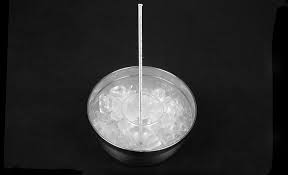
Breaking News
 Green Rush Reloaded: Pot Stocks Soar On Trump Push For Rescheduling
Green Rush Reloaded: Pot Stocks Soar On Trump Push For Rescheduling
 Nuclear Reactors For Investors
Nuclear Reactors For Investors
 Everyone Except Zelensky 'Loved' My Plan, Trump Says, Warning Of WW3
Everyone Except Zelensky 'Loved' My Plan, Trump Says, Warning Of WW3
 Israel Used Palantir Technology In Its 2024 Lebanon Pager Attack, Book Claims
Israel Used Palantir Technology In Its 2024 Lebanon Pager Attack, Book Claims
Top Tech News
 Build a Greenhouse HEATER that Lasts 10-15 DAYS!
Build a Greenhouse HEATER that Lasts 10-15 DAYS!
 Look at the genius idea he came up with using this tank that nobody wanted
Look at the genius idea he came up with using this tank that nobody wanted
 Latest Comet 3I Atlas Anomolies Like the Impossible 600,000 Mile Long Sunward Tail
Latest Comet 3I Atlas Anomolies Like the Impossible 600,000 Mile Long Sunward Tail
 Tesla Just Opened Its Biggest Supercharger Station Ever--And It's Powered By Solar And Batteries
Tesla Just Opened Its Biggest Supercharger Station Ever--And It's Powered By Solar And Batteries
 Your body already knows how to regrow limbs. We just haven't figured out how to turn it on yet.
Your body already knows how to regrow limbs. We just haven't figured out how to turn it on yet.
 We've wiretapped the gut-brain hotline to decode signals driving disease
We've wiretapped the gut-brain hotline to decode signals driving disease
 3D-printable concrete alternative hardens in three days, not four weeks
3D-printable concrete alternative hardens in three days, not four weeks
 Could satellite-beaming planes and airships make SpaceX's Starlink obsolete?
Could satellite-beaming planes and airships make SpaceX's Starlink obsolete?
Scientists cool water to -263° C without freezing it

Researchers in Switzerland have figured out a way to reduce the temperature of water to a very cool -263° C (-441.4° F) without freezing it, opening up some interesting possibilities around how we study molecular structures at extreme temperatures.
Water turns to ice as it is cooled to zero degrees and molecules on the surface begin to crystallize and turn to ice, which spreads to nearby molecules and continues on until the whole body of water is frozen solid. In this form, the water molecules are organized in a 3D lattice structure which is very different to the unorganized state of regular water molecules, a characteristic that allows it to flow freely.
So what if water could be cooled to below freezing temperatures without forming the icy crystals that give it this solidity? Physicists and chemists at ETH Zurich and the University of Zurich have figured out a new way of doing this, and it centers on a new kind of biological matter they've called lipidic mesophase. Within it are molecules that behave in much as the same way as natural fat molecules, or lipids, and will take it upon themselves to gather and self-assemble into membranes.

 First totally synthetic human brain model has been realized
First totally synthetic human brain model has been realized Mach-23 potato gun to shoot satellites into space
Mach-23 potato gun to shoot satellites into space

